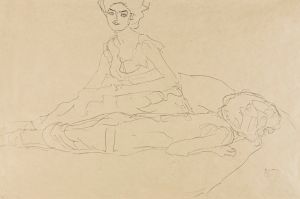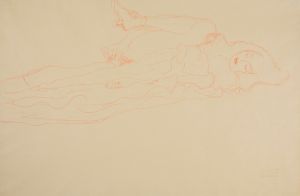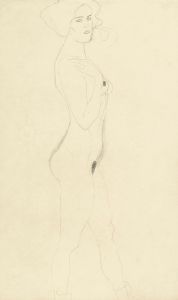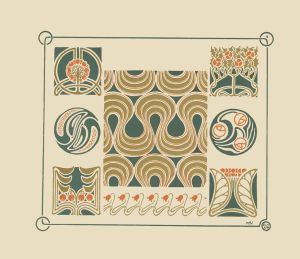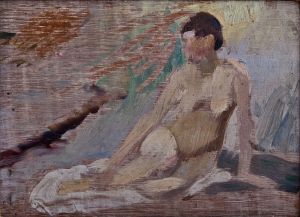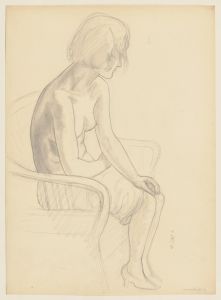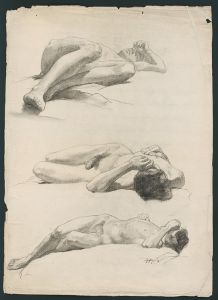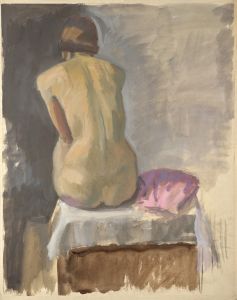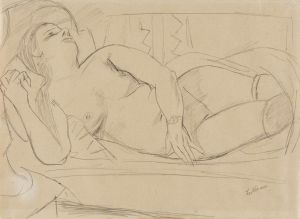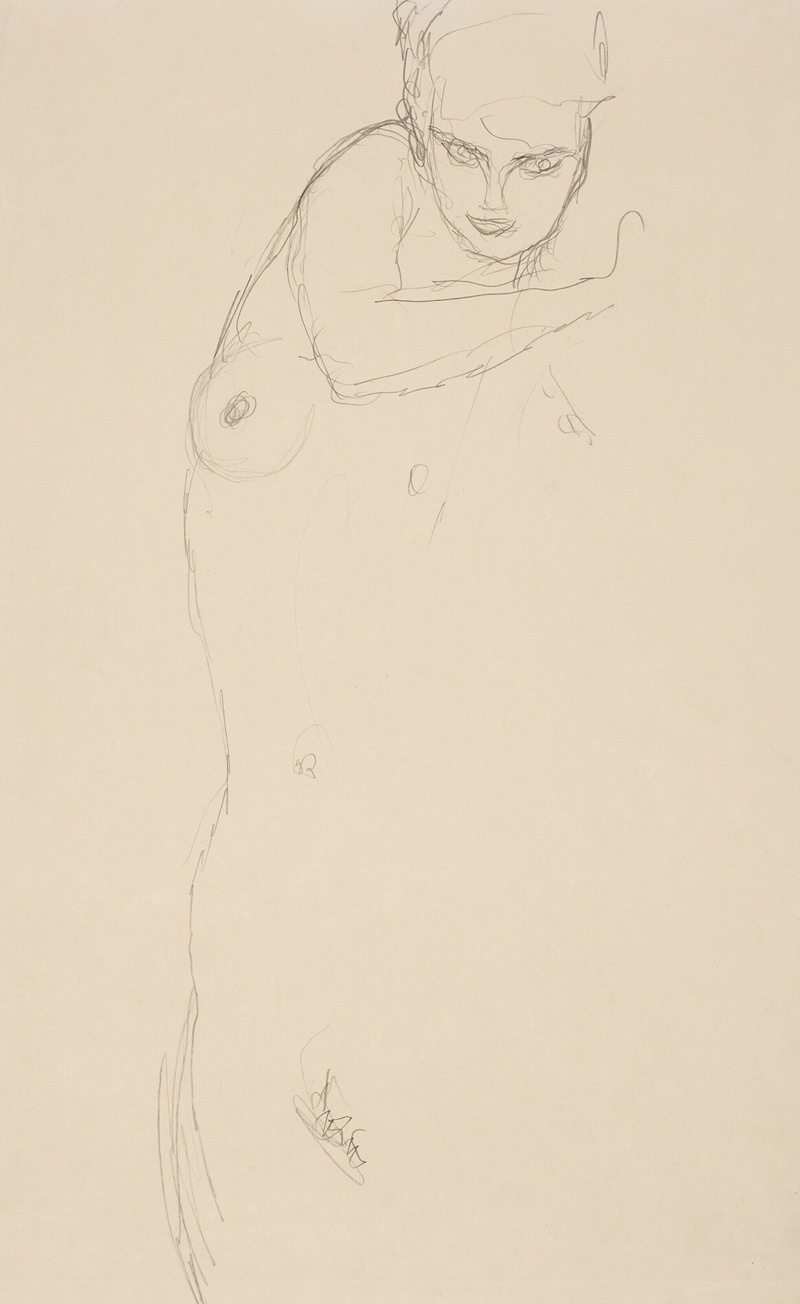
Stehender Akt von vorne
A hand-painted replica of Gustav Klimt’s masterpiece Stehender Akt von vorne, meticulously crafted by professional artists to capture the true essence of the original. Each piece is created with museum-quality canvas and rare mineral pigments, carefully painted by experienced artists with delicate brushstrokes and rich, layered colors to perfectly recreate the texture of the original artwork. Unlike machine-printed reproductions, this hand-painted version brings the painting to life, infused with the artist’s emotions and skill in every stroke. Whether for personal collection or home decoration, it instantly elevates the artistic atmosphere of any space.
"Stehender Akt von vorne" (Standing Nude from the Front) is a drawing by the renowned Austrian symbolist painter Gustav Klimt. Klimt, born on July 14, 1862, in Baumgarten, near Vienna, is best known for his paintings, murals, sketches, and other objets d'art. His primary subject was the female body, and his works are marked by a frank eroticism.
The drawing "Stehender Akt von vorne" is part of Klimt's extensive body of work that explores the human form, particularly the female nude. This piece, like many of his drawings, showcases his exceptional draftsmanship and his ability to capture the delicate and sensual nature of his subjects. Klimt's nudes are often characterized by their naturalistic yet idealized forms, and this drawing is no exception.
Created during the early 20th century, "Stehender Akt von vorne" reflects Klimt's mature style, which had evolved significantly from his earlier academic training. By this time, Klimt had moved away from the more traditional and historical themes that marked his early career and had embraced a more personal and expressive approach. His drawings from this period are noted for their fluid lines and the subtle interplay of light and shadow, which give the figures a sense of volume and presence.
Klimt's approach to the female nude was both innovative and controversial. He often depicted his subjects in relaxed, natural poses, which was a departure from the more rigid and formal representations common in academic art. This naturalism, combined with his focus on the sensual and erotic aspects of the human body, challenged contemporary norms and provoked both admiration and criticism.
"Stehender Akt von vorne" is a testament to Klimt's skill as a draftsman and his deep understanding of the human form. The drawing is executed with a confident and fluid line, capturing the grace and beauty of the female figure. The simplicity of the composition, with the figure standing alone against a blank background, draws attention to the form itself and highlights Klimt's ability to convey emotion and character through minimal means.
Klimt's drawings, including "Stehender Akt von vorne," were often preparatory studies for his larger works, including his paintings and murals. However, they are also valued as standalone works of art, appreciated for their technical mastery and their insight into Klimt's creative process.
Gustav Klimt's influence on the art world extends beyond his lifetime. He was a central figure in the Vienna Secession movement, which sought to break away from the conservative traditions of the Austrian art establishment and promote a more modern and experimental approach to art. Klimt's work, with its emphasis on beauty, sensuality, and the exploration of the human condition, continues to inspire and captivate audiences today.
In summary, "Stehender Akt von vorne" is a significant example of Gustav Klimt's work, showcasing his mastery of the human form and his innovative approach to the depiction of the female nude. Through his confident line work and sensitive rendering, Klimt captures the essence of his subject, making this drawing a valuable piece in the study of his artistic legacy.









